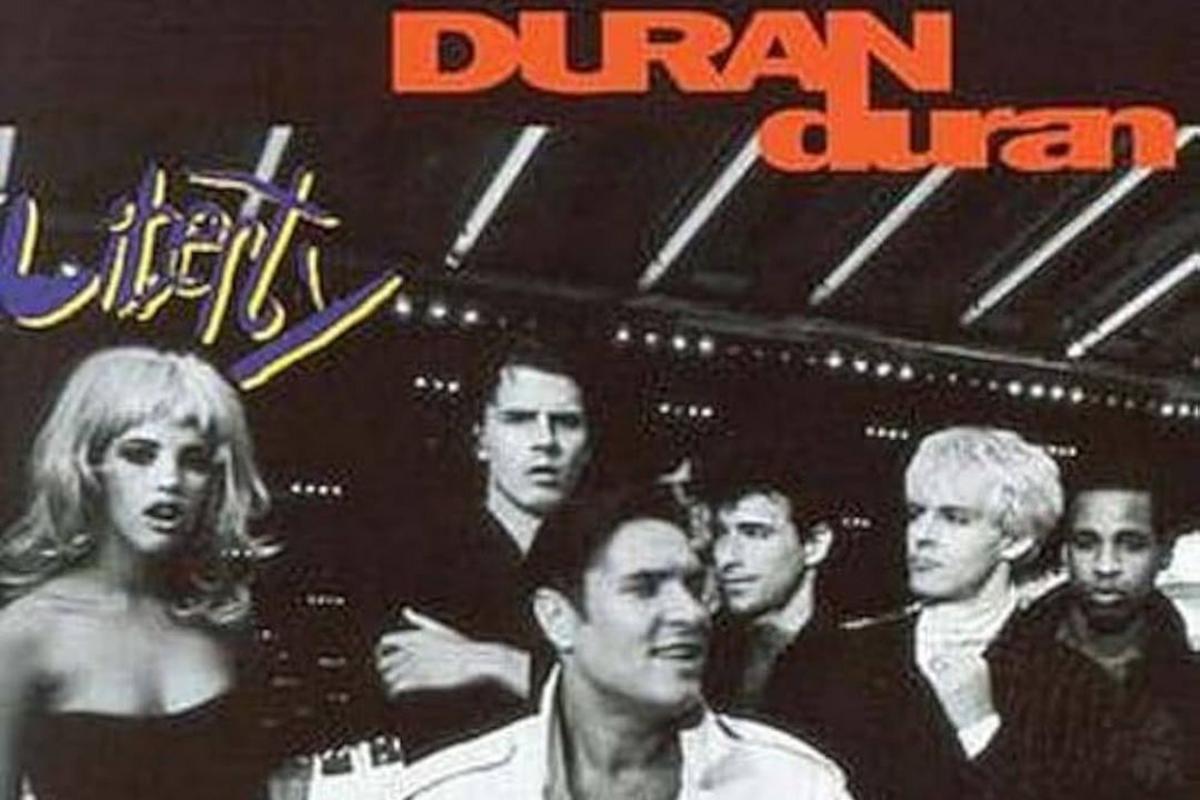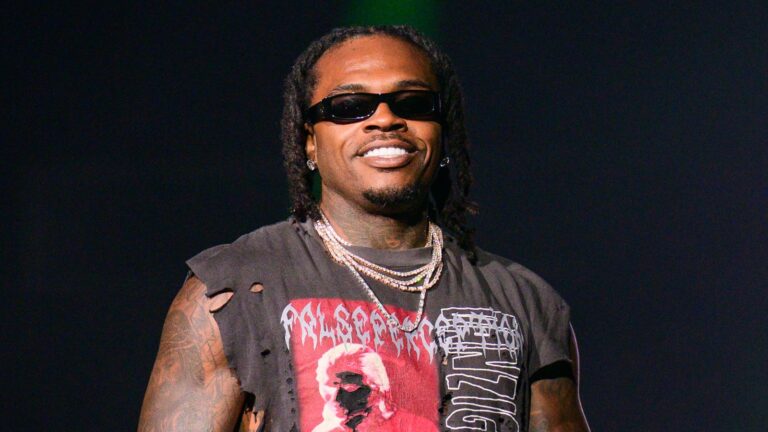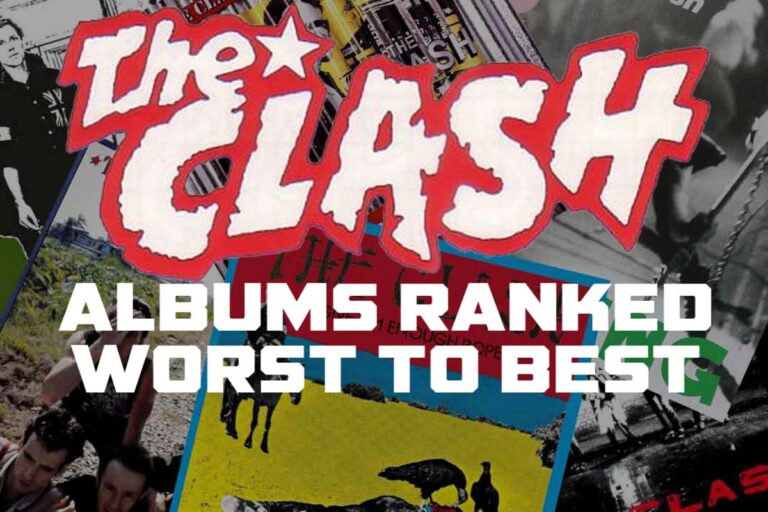During Behind the Music‘s successful run on VH1, viewers quickly noticed a pattern in the stories the show told. Every act started from obscurity, worked hard, made it big, and then became victims of their own success, bottoming out for a period before the (at least somewhat) uplifting final act.
It got to be pretty funny after a while, but it really wasn’t the show’s fault — it’s just that a whole lot of artists follow the same basic career arc.
The guys in Duran Duran, for example? During their first decade and change, they followed it to a T.
After breaking big with their self-titled 1981 debut, Duran Duran owned the pop charts for the next several years, earning multi-platinum success with 1982’s Rio and 1983’s Seven and the Ragged Tiger, each of which peaked inside the Top Ten. But after recording three albums in three years, touring regularly, and enjoying all the fruits of their labor, they started to pull in different directions and experiment with side projects.
A combination of exhaustion and creative tension led to the departures of guitarist Andy Taylor and drummer Roger Taylor, which reduced the group to a trio for 1986’s Notorious. That album, co-produced with Chic‘s Nile Rodgers, reflected the more R&B-influenced direction they’d started trending toward, which continued with 1988’s Big Thing.
While each of those albums were successful in their own right, neither sold quite as well as the group’s first three LPs. Duran Duran were still pop stars, but the growing impression was that their star was fading.
Their next album, 1990’s Liberty, didn’t help. At all.
On paper, the period leading up to Liberty‘s release was full of signs pointing to a possible creative rebirth. After serving as sidemen for extended periods, guitarist Warren Cuccurullo and drummer Sterling Campbell were formally added to the lineup, with Cuccurullo in particular adding a fresh voice to the songwriting mix.
There was also the sense that after finding different modes of expression in their various side projects, the group’s core trio had found a way to blend everything into a happy whole.
“We don’t feel confined, which is relevant to the album,” vocalist Simon Le Bon told the Associated Press. “I think that’s why we call it Liberty. I wanted to do things that I could do in Arcadia and in Power Station, but I want to do them in Duran Duran. This is better than anything we can do ourselves.”
Read More: The Best Album by New Wave’s 15 Biggest Artists
All that optimism, however, only papered over an unavoidable creative malaise. Writing new songs wasn’t a problem — in fact, they ended up with far more than they needed — but finding a consistent focus proved difficult. Working with co-producer Chris Kimsey, they ended up with an 11-track LP that wholeheartedly embraced the synthy sounds of its time, but amounted to a handful of highlights that were outweighed by subpar fluff.
“I was not a happy camper when we were making Liberty,” bassist John Taylor admitted years later. “Especially by the time we went into the recording studio. I wasn’t strong enough to leave then. I mean, all I could do at that point was hang on by the skin of my teeth. When we were rehearsing it, when we were writing it was gonna be a great album. I really felt it was gonna be a great album. When we got in the studio, I fell apart and the production just wasn’t right. It turned out to be a very mediocre album.”
Upon Liberty‘s August 20, 1990 release, critics generally agreed. “You’d think it was good if Duran Duran refused to change with the times, so that their white trash, funky pop would still stand out amid the dross. But life’s not that simple,” wrote critic Michele Kirsch for Select in a typical review. “This is exactly what they’ve done and it’s crap.”
Of course, Duran Duran’s relationship with music critics was never of supreme importance. What really mattered was the fans — and most troublingly, that relationship had also clearly frayed. Liberty peaked at No. 46, then a career worst for the group, and only eked out one charting single: “Violence of Summer (Love’s Taking Over),” which sputtered out at No. 64.
The shifts in the band’s lineup and their changing sound likely had something to do with this. But from within, it also felt like they were perceived as lightweights, particularly after the surge in socially conscious rock that emerged in the mid-’80s. John Taylor pinpointed Live Aid — which was, somewhat ironically, the last time the original lineup would play live for many years — as the moment they started losing their grip on the zeitgeist.
“From then on you had to have a social conscience, and we represented ’80s decadence,” Taylor reflected in a 1993 interview with Details. “After Live Aid it was like: U2 in, Duran out. It was that simple.”
For all these reasons, Liberty‘s release marked a low point in Duran Duran’s career — an impression that only deepened when the band declined to tour in support of the album, opting instead to head directly back to the studio and continue working on the outpouring of new material that started during the Liberty sessions. Ultimately, this ended up working in their favor.
Three years after Liberty flopped, Duran Duran returned with their seventh studio LP, a self-titled effort commonly referred to as The Wedding Album. It returned the group to the American Top Ten for the first time since Seven and the Ragged Tiger, went platinum, and gave them one of their biggest all-time hit singles in “Ordinary World,” kicking off a second act that continues to this day. Various highs and lows have followed, but in hindsight, Liberty remains the last stone in the road during a very volatile period.
Looking back, the band members seem to agree that although it isn’t without its share of standout songs, they missed what they were going for with the record. Still, like any chapter, it needed to be finished before the next one could begin.
As Rhodes later put it, “John and I have one thing in our whole oeuvre we feel we really got wrong, and that’s the Liberty album.”
“I think the issue with Liberty is that we were in a transition and there were some tracks that didn’t have our whole heart in it. The album came at a difficult time, when a lot of the world was saying, ‘We don’t want any more Duran Duran, we’ve had enough of you.’ Of course, we refused to go away,” Le Bon explained. “I wouldn’t go back and change anything, though. I’d rather spend two weeks writing a new song than making changes to Liberty. It was a point in time for Duran Duran. I really do look back on Liberty with a lot of fondness.”
Top 40 New Wave Albums
From the B-52’s to XTC, Blondie to Talking Heads, a look at the genre’s best LPs.
Gallery Credit: UCR Staff



